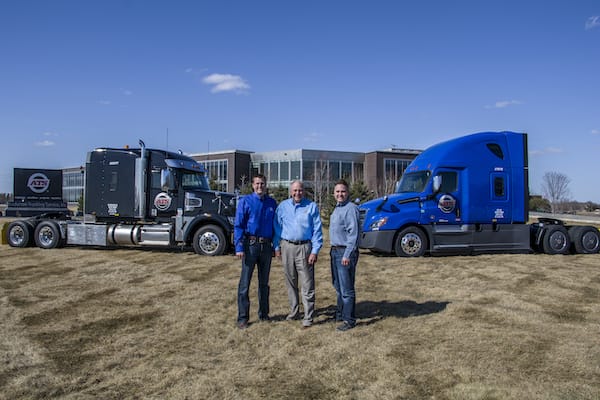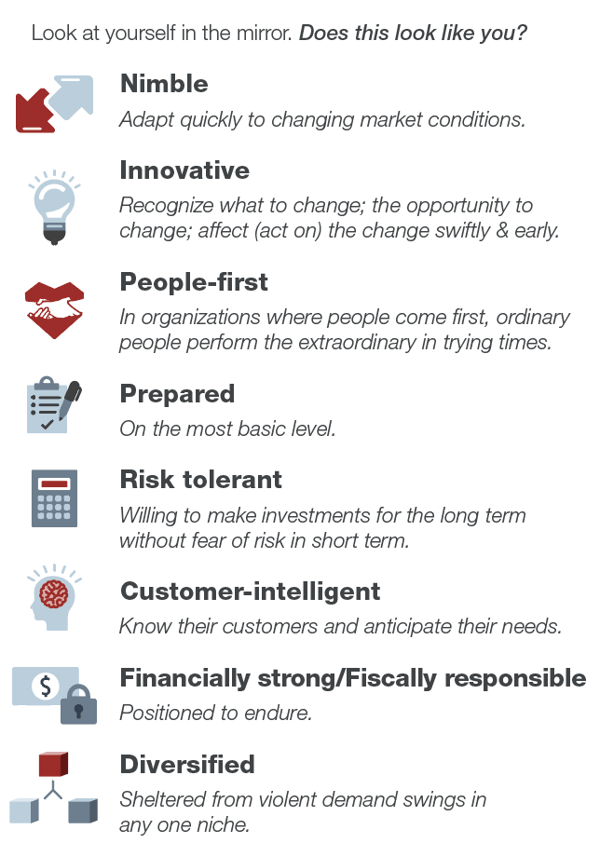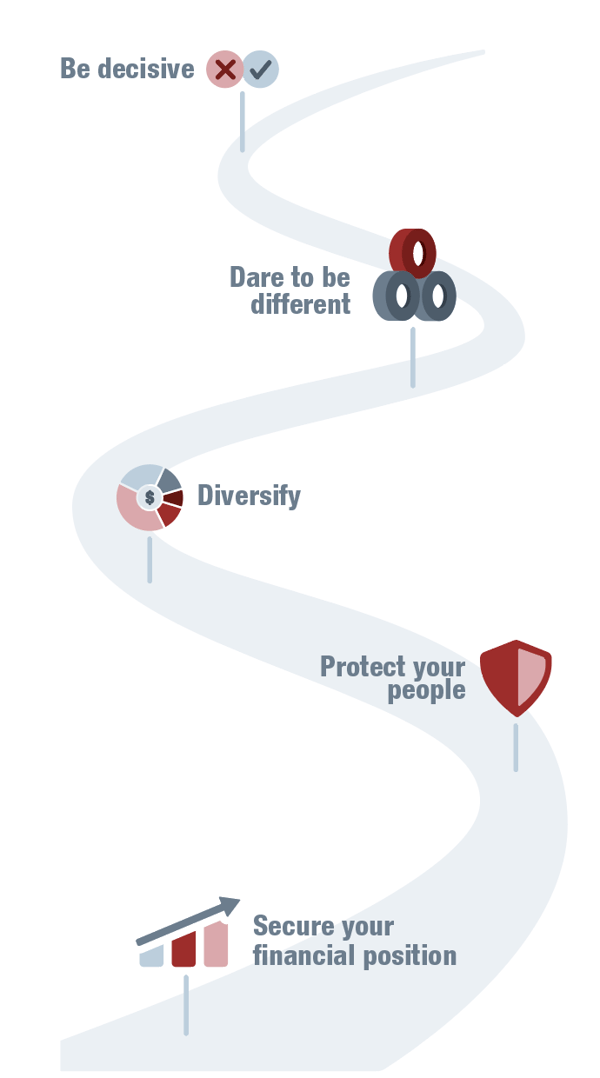Disruptions in the supply chain have been happening since the beginning of time. What do companies that survive have in common?
In the midst of a global pandemic unlike no other, thankfully much of the global business community is focused on reopening the economy, preparing for a ‘new normal’ and working around the clock to get back on its feet. Along the way, demand for almost all goods and services has been impacted in some way. And the global supply chain – the servicing, manufacturing and movement of goods to the end user from any geographical or combination of geographical points in the world – will likely never be the same.
But seasoned business leaders know that this, too, shall pass. In fact, throughout our history of growth and progress, American business is no stranger to disruptive events – both natural and manmade – that have caused disturbances of varying magnitudes to the global supply chain.
“Volatility of demand has been the common denominator present across all supply chain disruptions throughout history.”
What do historical disruptions to the supply chain have in common?
Anytime the supply chain experiences disruption, it isn’t an inability to move goods that creates it. Despite being subject to some of the same vulnerabilities that manufacturers are during crises, transportation is surprisingly resilient. We adapt quickly; we engage quickly (move quickly). There are ups and downs of supply and demand driven by the market, but we bounce back quickly. Instead, volatility of demand has been the common denominator present across all supply chain disruptions throughout history.
Common Causes of Supply Chain Disruptions Throughout History
- Weather: Damage/loss caused by interruptions in production in the states affected + new demand created by emergency needs cause temporary shifts in the supply chain for months – even years – on end.
- Financial: Financial crises have created perhaps the most profound, long-term impacts throughout history. Demand, production & inventory levels may be impacted nationwide.
- Labor Disruptions: The U.S. has seen an average of 10-15 work stoppages a year between 2010 and 2019. Affected manufacturers experience temporary inability or reduced ability to produce & provide products.
- Deregulation: The largest, most direct impact on transportation. Changed how transport would be done and how it would be managed. Created innovation across transportation modes.
- Market Expansion / Contraction: Relatively broad and easily survivable. Normal ebbs and flows in market activity.
- Geographical Recessions: Don’t always impact U.S. supply chains directly, but can. i.e. Raw materials manufactured in recessionary countries can impact domestic production flows.
With each passing event, business leaders have wondered how they’d survive. Yet somehow we did. While the transport part of the supply chain has been historically resilient, in today’s ‘new normal’, the game is changing.
Far from being ‘out of the woods’ in the Coronavirus pandemic, we are only just beginning to see the impact of the most far-reaching, unexpected disruption in modern history. COVID-19 has single-handedly managed to create the perfect storm, bringing varying levels of all forms of historical disruption (with the exception of weather and deregulation) rolled into one.
Several factors make this one different:
- It is worldwide and not specific to any limited geography.
- It happened so quickly.
- Its origin was not man-made nor political and was outside of everyone’s control.
- It affected people directly; and people drive the supply chain.
Prior to COVID-19, the transportation industry was already facing daunting challenges from regulatory and insurance pressures that were gearing up to force smaller carriers to exit the market. And now, during and in the aftermath of the pandemic, those pressures are multiplied by production shutdowns and violent swings in demand that will force additional narrowly focused carriers out. Never in history has it been more apparent that only the strong will survive. So what does it take to endure – and thrive – in a post- pandemic world?

The Anatomy of the Survivors
Though the pandemic has posed a unique – and new – set of challenges to the global supply chain, ironically, companies that emerge positioned to rise to the challenges of the new day will have done so because of cultural characteristics that are surprisingly old. These survivors will share a common set of traits that have stood the test of time, guiding the organizations embracing them through times of hardship for centuries.

At end of the day, there’s nothing anybody could have done to prevent us from being where we are today. Nobody caused the Coronavirus pandemic. But there are companies that will lead us through the process of getting our supply chains back on their feet. We at ATS – and others like us - have the opportunity to lead our way out of this crisis. Companies that crumbled in the wake of major disruptions in the global supply chain throughout history didn’t necessarily do anything wrong. Rather, those that survived did so more because of what they instinctively did right. At ATS, we’ll do it the way we’ve done it for 65 years.
The Path to a New Normal

1. Secure your financial position – the decisions and investments you make today can protect your people & your business down the road. Private companies are in a unique position to take risks that may not be possible for others. The ATS team is incredibly strong in vetting opportunities for growth and innovation and we use our expertise to make calculated, forward-thinking decisions. Those have paid off over our 65 year history. Financial security builds long-term systemic stability.
2. Protect your people – the knowledge base. In-house and especially on the road, your people and their talents and intellectual property are the singular factor that will pull a business through. Treat them fairly and honestly. Provide for them. Give them opportunity and train them.
“We have a responsibility to provide opportunities for our people to perform up to their potential.”
At ATS, we recently created and invested in the Anderson Assistance Foundation, a not-for-profit foundation whose sole mission is to provide assistance and support directly to Employees and Drivers of the Anderson Family of Companies and their families in times of hardship.
3. Diversify – strike a balance in your business. This can absolutely include niche-specific strategies to help you gain market and competitive advantages. But balance your revenue streams and your dependence on them. At ATS, rather than focusing on one thing, we’ve invested in an infrastructure (people, process, equipment) that allows us to specialize in many markets yet deliver a consistent level of quality across them to serve each uniquely well. Diversity provides stability, especially through violent fluctuations in niche markets.
4. Dare to be different – Innovation comes in many forms. Always be looking ahead for opportunities to create mutual wins for you and your customers. When we look at equipment, for example, we aren’t always looking for the next ‘newsmaker’ trailer. We often challenge our vendor partners to make equipment that’s lighter or reconfigure layouts to help common freight types stay within legal limits so our customers can avoid additional permitting costs. Become more valuable to your customer. Opportunities can be found almost everywhere you look. Large or small, harness as many of them as you can. Be ready to do the things that are hard or that others don’t want to do; and be willing to invest to do them well.
"Be ready to do the things that are hard or that others don’t want to do; and be willing to invest to do them well."
5. Be decisive – don’t let uncertainty paralyze you. Listen to your gut. Vet the facts. Take action. While we’ll always do the necessary due diligence to guide our decision making, being a privately held company allows us to make decisions swiftly once we have the facts in front of us. Don’t be afraid to make a decision to move forward. It might not always turn out exactly as planned, but in any instance, a moving ship is easier to steer.
Nobody wants a crisis to occur. And I pray we never, ever have to go through one like this ever again. But America is resilient. The Coronavirus is strong. But the resolve of American business is stronger. When we come out of this battle, we’re going to be ready to fight the war. Looking back through history, I can’t help but wonder if perhaps supply chains didn’t survive in spite of trying times; they evolved and thrived because of them.

